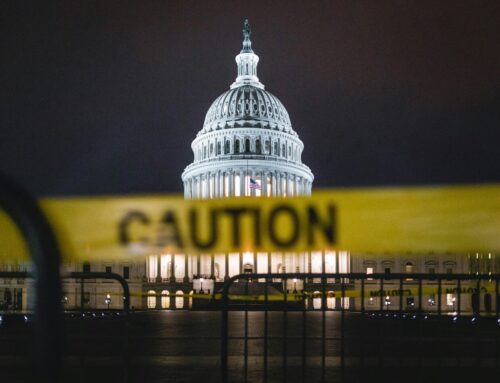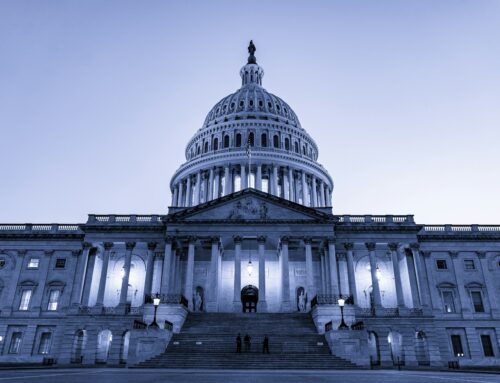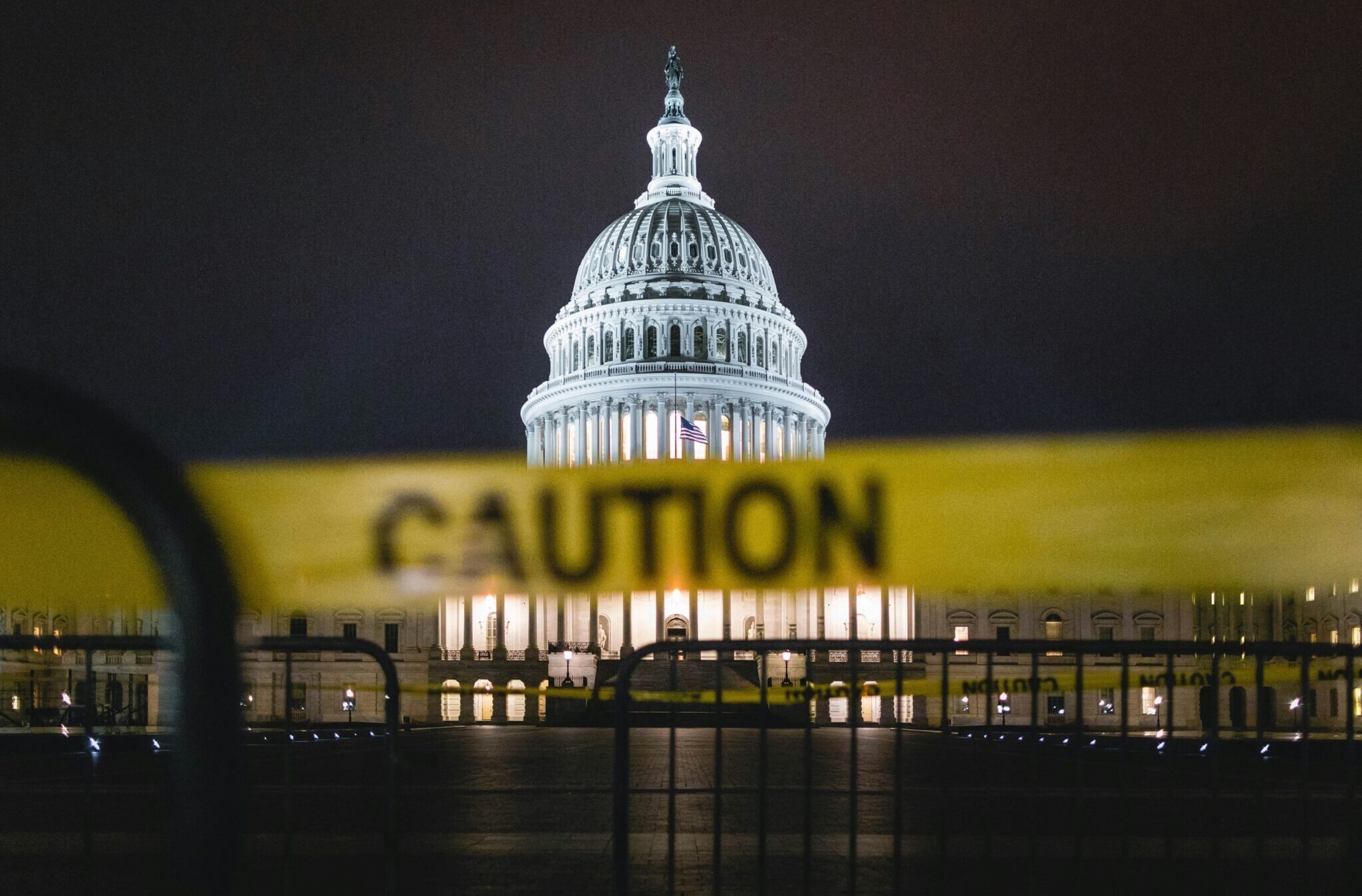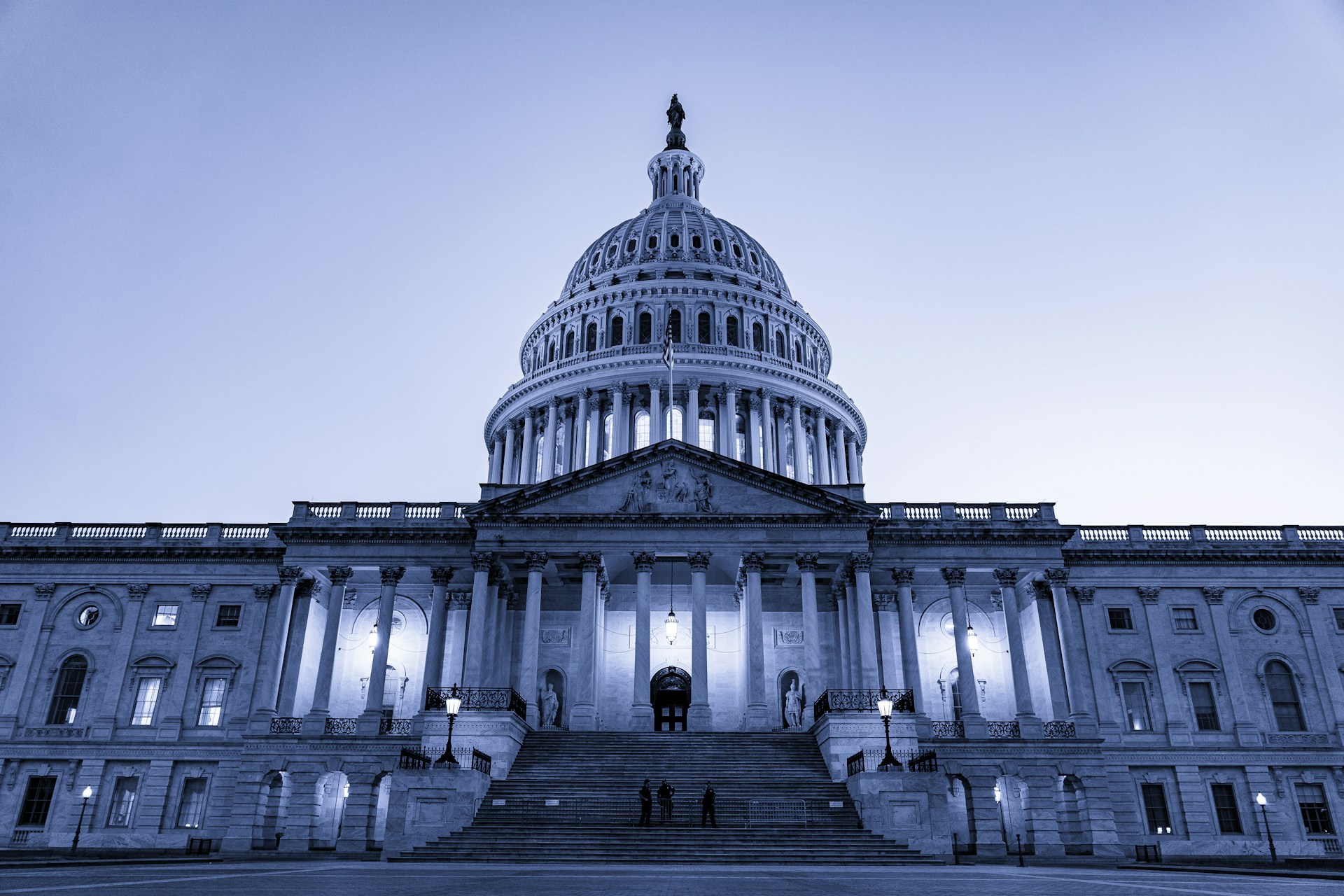Testimony of Ryan Alexander
President, Taxpayers for Common Sense
House Oversight and Government Reform Committee hearing on
“Government Spending: How Can We Best Address the Billions of Dollars Wasted Every Year”
February 5, 2013
Good afternoon, Chairman Issa, Ranking Member Cummings, members of the committee. Thank you for inviting me here to testify at this hearing about government spending, waste, and what can be done about it. I am Ryan Alexander, president of Taxpayers for Common Sense, a national non-partisan budget watchdog.
I sat before you almost exactly two years ago testifying on the Government Accountability Office’s (GAO) high risk and duplicative programs reports talking about ways to save tax dollars, enhance revenue, and reduce our deficit and debt. Sadly, there hasn’t been a lot of progress, but this Committee’s ability to highlight these issues is one of the best ways to bring about change. The transportation bill came and went and did little to deal with the problems funding our roads and rails. Congress slightly altered the byzantine tax code in the fiscal cliff deal at the end of last year, including resurrecting the mostly expired tax extenders package of breaks.
But, I do want to recognize one positive change since I last testified: Congress let the duplicative and wasteful ethanol subsidy – VEETC – end in 2011.
Beyond today, I want to assure each and every one of you that Taxpayers for Common Sense is ready, willing, and able to work with you to eliminate waste and inefficiency and give taxpayers a government that works.
Defense
Considering Pentagon spending takes up more than half of the discretionary budget, it seems appropriate to begin there. The Department of Defense (DOD) is the world’s largest bureaucracy, employs more people than the world’s largest corporation, and is centered at the world’s largest office building – the Pentagon. So it should be no surprise DOD is extremely vulnerable to waste and duplication. This is particularly true for the process of purchasing more than $400 billion of goods and services it buys every year. DOD released last November the 2.0 version of its “Better Buying Power” contracting reforms, which took on many valuable targets such as lack of competition, requirements creep, and weak enforcement of cost constraints. However, the 2.0 reforms turned away from the emphasis on fixed-price contracts that the previous reforms adopted in reaction to contract cost overruns. The Pentagon is the federal government’s largest buyer, and most of its largest contractors are reliant on the government for the vast majority of their business. Yes, contracts are not one-size-fits-all, but is anyone really worried that billions of taxpayer dollars aren’t sufficient incentive for a company to control costs? A much tougher line must be taken in order to rein in the department’s chronic spending problems.
The same holds true for DOD’s glacial progress toward auditability. Though two lawmakers introduced bills in an attempt to impart real consequences for failing to reach the fiscal accountability standards required by law, the only news produced by DOD on the matter was the cancellation of the Expeditionary Combat Support System (ECSS), a modified off-the-shelf computer program that was supposed to consolidate the Air Force’s accounting and logistics systems in order to meet the 2017 audit requirements. Instead, after seven years and more than $1 billion, the Air Force pulled the plug because it was going to cost another $1 billion to get a product that delivered only a quarter of what it was supposed to do originally. The ECSS had a laudable goal – DOD still runs on too many redundant, out-of-date accounting systems that only obscure how taxpayers’ dollars are spent – but terrible execution.
Any budget watcher knows the defense budget has more than doubled since the Sept. 11, 2001 attacks. Aside from rampant waste, fraud, and abuse in our overseas military operations, a result of this spending explosion was the migration of functions from other parts of government into DOD. At the policy level, this “mission creep” means important functions such as diplomacy and foreign aid are increasingly being carried out by the military. Duplication – or worse competition – between defense and state departments in stabilization, reconstruction, and humanitarian assistance, flagged in the last GAO report, continues to be a problem. A major contributor is the lack of transparency in DOD foreign assistance accounts. Unfortunately, a recent bill that enjoyed wide bipartisan support (the Foreign Aid Transparency and Accountability Act) was recently obstructed in the Senate by one lawmaker. Passage of this bill by the current Congress would make major strides toward rectifying this problem.
DOD also has numerous programs and accounts that are almost wholly duplicative of activities in other agencies.
Ironically, several of DOD’s attempts to rein in costs and reduce duplication have been stymied by Congress. Exhibit A is TRICARE, DOD’s health care system. The cost of TRICARE has more than doubled in the last decade and in FY12 will exceed more than $50 billion. Because premiums haven’t increased since the program’s inception almost two decades ago, many working age military retirees who are fully employed and have employer-provided health insurance available still opt for TRICARE, which amounts to a government subsidy for employers. There are ways to modernize the program while keeping faith with the promise of health care coverage for the men and women and their families who have served this country so well. Unfortunately, Congress has prevented attempts to halt the soaring spending trajectory. The FY13 Defense Authorization bill did include what conferees called a “modest” increase in pharmacy co-pays capped by cost-of-living allowances (COLAs), as well as incentives for some members to buy drugs through mail order. But these are only small initial steps toward reform. The subsidies still induce too many people to rely on TRICARE when other options are open to them.
There is also the issue of unneeded weapons, some of which would be retired, but for intervention by Congress, including C-17 and C-130J cargo planes stationed at Air National Guard bases across the country and the M-1 Abrams tank. The National Nuclear Security Administration (NNSA) has been on the GAO’s High Risk list for years, yet change never seems anywhere in sight. The Department of Energy (DOE) is the largest federal contracting client outside of the Defense Department: Nearly 90 percent of its $26 billion annual budget goes to contractors. NNSA accounts for nearly 40 percent of DOE’s budget, and the laboratories and production plants that comprise the national nuclear weapons “complex” are actually operated and managed by private corporations. The arrangements these corporations work under, known as “Government-Owned, Contractor Operated” contracts or “GOCOs,” have done nothing to lessen NNSA’s persistent problems of inflated overhead costs, security breaches, and construction cost overruns, and in some cases actually increased them.
On the positive side, we are gratified that lawmakers appear ready to uphold the funding freeze on the Chemistry and Metallurgy Research Replacement project (CMRR), a plutonium processing facility at Los Alamos National Laboratory in New Mexico that has racked up substantial cost and schedule overruns while failing to justify its size and expense. Another project that should meet a similar fate is the Mixed-Oxide Fuel Program (MOX). Based at the Savannah River Site in South Carolina, MOX has been troubled since its inception in the early 2000’s. Yet despite a continuously ballooning price tag, incessant construction delays, and a total absence of demand for its future product, MOX’s every failure has been rewarded with increased funding.
Along with the Project on Government Oversight, Taxpayers for Common Sense has outlined nearly $800 billion in Pentagon savings in our report, Spending Even Less, Spending Even Smarter. I would like to submit that for the record.
General Government
As detailed with DOD and DOE, acquisition is a major challenge for federal agencies. In the last decade there has been a litany of high profile acquisition failures, including: Future Combat System, SBInet, US-VISIT, Deepwater, and others. A common thread of these acquisitions was the use of LSIs or Lead System Integrators, where the government doesn’t know exactly how to meet their needs and relies on the contractor for that instead. When shutting down Deepwater last year (though not the recapitalization), Admiral Korn who is in charge of Coast Guard acquisition observed, “In the end, the general consensus is that we ceded too much responsibility to the contractor, including some functions that should have been reserved for government employees.” While we admire his candor, the sad truth is that has often been the case, whether through spiral contracting or LSIs or other acquisition model euphemisms. The only people who are going to look out for the government- and by extension the taxpayer- interests are going to be government employees. As then-Senator Truman observed while leading his famous committee that rooted out waste in WWII contracting, “I have never yet found a contractor who, if not watched, would not leave the government holding the bag. We are doing him a favor if we do not watch him.”
Natural Resource Management
Natural resources derived from federal lands and waters can and do provide great benefit to the entire country. Public lands are taxpayer assets and should be managed in a way that preserves their value, ensures a fair return from private interests using them for profit, and avoids future taxpayer liabilities. To this end, federal lands and waters must be mined, drilled, or otherwise developed in a manner that protects taxpayers’ interest. Appropriate fees, rents, and royalties must be applied and collected and long-term liabilities such as potential clean-up or mitigation costs must be shouldered by the industries.
Oil and Gas Royalty Relief
As we all know oil companies continue their decade long trend of raking in billions in profits. Even at the height of the recession, profits for the top five oil and gas companies continued to soar. And while the profits flowed in, the federal government continued to provide generous subsidies, many of which have been on the books for nearly a century, to the oil and gas industry. One of the largest giveaways to the oil and gas industry is the mismanagement and under collection of royalties which has been highlighted by the GAO in several reports and recently added to their high risk list in 2011.
It is the federal government’s responsibility to protect taxpayers’ resources and ensure they are adequately compensated for their sale. Unfortunately mismanagement and cozy relationships led to the oil and gas industry shortchanging taxpayers for decades by either underpaying or even not paying royalties at all. I know you’ve been a leader on this issue, Mr. Chairman, but in the Gulf of Mexico, the federal government provided royalty “relief” to oil and gas companies for offshore drilling in the mid 1990s. The 1995 Deep Water Royalty Relief Act (DWRRA) awarded royalty “relief” for leases sold from 1996-2000. At the time the law was passed, oil and gas prices were only $18/barrel and royalty “relief” might have seemed like a small incentive for drilling, but DWRRA has since become one of the biggest subsidies the oil and gas industries receive— the total cost to taxpayers could total up to $53 billion in the next 25 years.
Fair Market Value for Renewable Development on Federal Lands
Although wind and solar development do not extract finite resources from federal lands, this commercial development does take benefit from public resources, and taxpayers should be appropriately compensated. The Department of Interior (DOI) has received hundreds of applications to construct wind and solar projects on federal land. In the Energy Policy Act of 2005, Congress set a goal of developing 10,000 megawatts of non-hydropower renewable energy on public lands by 2015. Securing a fair return for taxpayers from this new commercial development is vitally important, especially in these times of fiscal constraints. Revenues should be collected accurately and diligently from resource development on public lands – including renewable resources.
Fair Market Value for Coal Leases
Recent attention has been drawn to coal companies underpaying royalties because coal’s value is much lower domestically than at its final export destination. An analysis by Reuters found in some cases companies were receiving ten times more for coal sold to China than they would receive for the same coal in the United States, but they were paying royalties on the domestic price, not what they got overseas. With numbers like this, coal exports are sure to increase in the next decade. Congress should work with the Department of Interior to ensure coal companies pay a fair royalty based on the actual price they receive for their coal. Previous court rulings have upheld this interpretation. While private interests that develop on public lands may expect to profit, they should not do so at the expense of the public. Coal extraction from taxpayer lands should benefit the public – either in the form of increased domestic energy production or increased public revenues.
1872 Mining Law Reform
For nearly two decades, TCS has advocated for reform of the General Mining Law of 1872 for one simple reason: this anachronistic law is a clear taxpayer giveaway.
In 1872, the goal was to entice individuals to settle the west. Unfortunately, what was an enticement 140 years ago is now a massive subsidy that has allowed companies to remove billions of dollars of gold, uranium, silver, and copper from public lands each year without a dime going to taxpayers.
Unlike other extractive industries, companies that mine for these precious metals do not have to pay a fee when operating on federal land, essentially allowing these valuable minerals to be given away for free. Hardrock mining must pay a royalty on taxpayer lands just as they do when extracting resources from any other landowner in the world.
In addition to allowing royalty-free extraction, the law also allows the “patenting” or sale of federal lands at 19th century prices. While a temporary moratorium on patenting has been in place since 1994, under the law, federal lands are sold for no more than $5 an acre – considerably below today’s market value. This should be permanently fixed.
Finally, in part because of inadequate bonding requirements, the General Mining Law of 1872 has allowed for the abandonment of contaminated lands. Any meaningful reform effort will address the three primary ongoing injuries to taxpayers under the 1872 law: the giveaway of federal lands; the extraction of federal mineral assets without taxpayer compensation; and the creation of taxpayer liability by allowing the abandonment of contaminated mine lands.
The United States’ commitment to participate in the extractive industries’ transparency initiative (EITI) also highlights the need to reform the governance of hard rock mining reform on public lands. Currently, the government does not track the volume of hard rock minerals from public lands because we collect no royalty. If we proceed with the EITI process, we must ensure that we track and make public the volume and value of hard rock minerals rather than memorializing this absence of transparency in the name of meeting international standards.
Energy
Department of Energy Loan Guarantees
Initially intended to fund the construction of nuclear reactors, the Title XVII Loan Guarantee program grew to include coal, biofuels, transmission, energy efficiency and renewable projects to ensure its passage through Congress in 2005. After getting beefed up in several appropriations bills and finally the 2009 stimulus, it now provides loan guarantees for “emerging” energy technologies, and for a short time, commercially deployed renewable technologies (expired September 30, 2011).
The program carries extremely high taxpayer risk, potentially jeopardizing billions of taxpayer dollars if energy project loans default. Over the course of the program’s six year life, the few taxpayer protections originally provided have not increased but been slowly eaten away. In October 2007, DOE issued a final rule detailing the processes and parameters of the program. Originally DOE proposed guarantees covering 90 percent of the value of the loan but at the behest of industry and lawmaker pressure DOE increased the coverage to 100 percent of the value of the loan.
Then in August 2009, DOE proposed changing the final rule to help industry again. The terms for taxpayers’ recoupment of assets in the event of project default were altered to benefit industry. The rule change stripped taxpayers their right of first lien and allowed other lesser creditors to recoup repayment of their debt before or on equal footing with the federal government, even when DOE is the majority debt holder of the project. This change was squarely against the original law, which required taxpayers’ right of first lien.
Through most of its life the program has stayed below the radar. But the high profile default on Solyndra’s $535 million loan guarantee brought the program and its potential losses under increased scrutiny, and we hope this Congress can stop the entire flawed program from issuing any more loan guarantees. Two loan guarantees sit in waiting that carry a much heftier price tag than Solyndra. One is a $2 billion loan guarantee for the near bankrupt United States Enrichment Corporation, and the other is $8.3 billion for Southern Company and its partners for a nuclear reactor project in Georgia. Southern Company has had a conditional commitment for more than 2 years, and the lack of transparency surrounding the application and its terms suggests to us that taxpayers are being short-changed in this never-ending negotiation. DOE continues to offer extensions to Southern Co., rather than pulling the plug on this bad deal. Considering the overarching Title 17 program falls dramatically short of protecting taxpayers, entering into the $8 billion deal is just plain fiscally reckless.
Renewable Fuel Standard (RFS) and Other Subsidies for Corn Ethanol
As if a lucrative tax credit wasn’t enough, the government mandated the purchase of corn ethanol in 2007. Under the Renewable Fuel Standard (RFS) passed in the 2007 energy bill, the U.S. is required to blend 36 billion gallons of biofuels with gasoline by 2022, up to 15 billion gallons of which can come from conventional corn ethanol. The ethanol industry has already received federal subsidies of one form or another over thirty years, including the Volumetric Ethanol Excise Tax Credit (VEETC) and a tariff on ethanol imports into the U.S. While VEETC and the ethanol tariff ended in 2011, the industry still benefits from a myriad of other subsidies, grants, loan guarantees, and other supports in the federal tax code and farm bill. Just a few examples of duplicative supports for corn ethanol include the Alternative Fuel Vehicle Refueling Property Credit and Rural Energy for America Program which both cover the cost of corn ethanol infrastructure projects, like installing blender pumps. Subsidies for corn ethanol must stop. And since the Renewable Fuel Standard has failed to meet its objectives and has caused major unintended consequences, it must be reformed.
Energy Liabilities
Federal programs also protect energy producers against paying the full costs of their own actions leaving the liability to taxpayers.
The oil and gas industry passes liabilities to taxpayers through the Oil Pollution Act of 1990, which ironically reacted to the Exxon Valdez spill by placing a $75 million cap on private damages that can be collected from energy producers that cause oil spills. To date, large oil companies that cause spills have ended up paying much more than the nominal cap for the largest and most public spills, but the existence of the statutory cap gives oil companies significant leverage when negotiating how much they will pay. The oil liability cap is a type of free insurance for oil companies funded by taxpayers. The fund also currently exempts synthetic crudes like tar sands from the eight cents per barrel tax despite paying for their costly clean-ups.
For the nuclear industry, the Price-Anderson Act makes the federal government responsible in the case of a nuclear accident that does more than $2 billion in damage at any nuclear reactor. Damages from any serious nuclear accident are likely to be well above $2 billion—some estimates for the costs of the nuclear tragedy in Fukushima, Japan, already top $200 billion. While it is hard to know the exact value of Price-Anderson to the nuclear industry, it clearly could be worth billions of dollars.
Agriculture
Outdated, ineffective, and duplicative agricultural policies waste billions of dollars each year to the detriment of taxpayers, consumers, and agriculture as a sector by making it less competitive, resilient, and accountable for its impacts. Perhaps no subsidy is more absurd than direct payments—which send more than $5 billion a year to owners of farm land simply because that land used to produce subsidized crops. While the House and Senate Agriculture Committees have finally acknowledged the need to end this egregious entitlement, they propose squandering most of the savings creating other unnecessary subsidies, namely expanded crop insurance and duplicative “shallow loss” programs that are designed to crowd out private sector risk management options and shift even more risk onto taxpayers.
The highly subsidized crop insurance program, which cost taxpayers a record $14 billion in FY12, should be reined in, not expanded. And unnecessary and risky shallow loss programs should be rejected. Billions more in savings can be achieved and future liabilities limited by eliminating other outdated subsidies like government-set counter-cyclical payments, permanent and ad hoc disaster assistance, and other special-interest carve-outs. A more cost-effective, accountable, transparent, and responsive agricultural safety net should be implemented to better align our nation’s policies with today’s modern agricultural practices and ensure subsidies are not unnecessarily shifting routine business risks onto taxpayers.
Transportation
In just five years, Congress has transferred more than $50 billion from the Treasury to backfill the nation’s Highway Trust Fund. The federal gasoline tax – used to pay for our roads, bridges, and transit systems – falls far short of raising adequate revenue to meet the nation’s transportation demands. One of the primary reasons for this is that the gasoline user fee has remained static for two decades decreasing its purchasing power. There is little public support, however, for an increase in the gas tax, in part because of the perception that the program lacks direction and accountability. Congress attempted to resolve some of these issues in the most recent transportation bill – MAP-21 – by consolidating programs and including performance measurement to increase efficiency. We still believe, however, that too much funding is directed to new construction instead of repair.
The Essential Air Service (EAS) program is a relic of the 1970s and airline deregulation. EAS provides subsidies to air carriers to maintain scheduled flights between rural communities and regional hub airports. These trips cost taxpayers as much as $1,000 per flight, and often the small planes that service the routes run empty or nearly empty. In addition, there are many instances where the subsidized airport is close enough to a hub airport that driving is not unreasonable. Finally, TCS has uncovered numerous examples of communities that could maintain transportation links to nearby hubs with intercity-bus service that could be run with little or no subsidy at all. I would like to submit for the record the report we conducted with the American Bus Association, Reason Foundation, and Natural Resources Defense Council on the issue. The simple fact is that this policy relic needs to be reformed, and in most if not all cases could be eliminated in all states but Alaska, saving taxpayers more than $1 billion over the next decade. Though Congress made changes to the program in last year’s Federal Aviation Administration reauthorization bill, this program still costs taxpayers nearly $200 million. A further restructuring of the program could eliminate most of this spending with minimal impact on small communities.
Medicare/Medicaid
Tens of billions of dollars are lost to waste and fraud in Medicare and Medicaid. Last Congress, along with 35 of their colleagues, Sens. Carper (D-DE) and Coburn (R-OK) introduced the Medicare and Medicaid Fighting Fraud and Abuse to Save Taxpayers Dollars Act (FAST Act). Rep. Roskam (R-IL) introduced a companion in the House.
TCS and other organizations endorsed this because the FAST Act includes stronger penalties for Medicare fraud and attempts to curb improper payments. It also includes provisions to tackle the issue of theft of physician identities to exploit for fraud; help states identify and prevent Medicaid overpayments; improve the sharing of fraud data across agencies and programs; and deploy cutting-edge technology to better identify and prevent fraud.
Clearly more needs to be done, but this represents a good start.
Tax Expenditures and Loopholes
More than $1 trillion in federal revenue is forgone each year due to tax expenditures – which are analogous to spending channeled through the tax system. The nearly 200 tax expenditures are similar to spending programs and can be the same magnitude or larger than related federal spending for some mission areas, except without the oversight. In their last report on the issue GAO stated that tax expenditures:
- can contribute to mission fragmentation and program overlap, creating the potential for duplication;
- may be ineffective at achieving their social or economic purposes;
- are effectively funded before discretionary spending is considered;
- may or may not be subject to congressional reauthorization.
Virtually every major recent analysis of the nation’s tax system has recommended eliminating virtually all income tax expenditures and using the revenue to lower tax rates and reduce deficits. Simpson-Bowles called for the elimination of more than 75 special subsidies for different industries in order to “create an even playing field for all businesses instead of artificially picking winners and losers.” Ways and Means Committee Chairman Camp and Budget Committee Chairman Ryan have made similar suggestions. In its previous report, GAO says, “reductions in revenue losses from eliminating ineffective or redundant tax expenditures could be substantial … GAO believes that tax expenditure performance is an area that would benefit from enhanced congressional scrutiny as Congress considers ways to address the nation’s long-term fiscal imbalance.”
We believe this is a unique opportunity for this committee to make a tremendous contribution to deficit reduction efforts by taking on the long-standing problem of tax expenditures. We hope for a tax reform process that will result in a simpler, fairer tax code by eliminating the maze of breaks and loopholes currently in the code. Rather than nibbling around the edges like the approach the Senate Finance Committee took to the so-called tax extenders package last fall, eliminate them all with a goal of simplicity and reduced rates and force advocates to justify their inclusion by quantifying the public return on investment for each expenditure with hard facts. We recommend, at a minimum, a review of all tax expenditures, and preferably, the elimination of many individual and corporate tax expenditures coupled with an effort to lower overall tax rates and broaden the tax base. We would go so far that just like zero based budgeting, we should have a zero based approach to tax expenditures.
In particular, we have advocated for elimination of tax expenditures and other tax loopholes that are not only redundant, but that also benefit some of the most profitable companies in the world for making investments they would make anyway. For example, the GAO has recommended that Congress “modify the Research Tax Credit to reduce windfalls to taxpayers for research spending they would have done anyway.” There are other policies where it isn’t clear if they actually stimulate activity, or subsidize actions that would have otherwise occurred, like in the case of the New Markets tax credit, and tax exempt status of government bonds.
Other tax expenditures Congress should look at closely include:
- Deduction of State and Local General Sales Taxes, which will cost roughly $23.4 billion over the next ten years. This was recently reinstated after being eliminated in the 1986 tax reform. The principal beneficiaries are the residents of states that don’t pay state income tax: Alaska, Florida, Nevada, South Dakota, Texas, Washington, and Wyoming.
- Last‐in, first‐out (LIFO) accounting enables companies to move the most expensive inventory off of their balance sheets, and thereby reduce their taxable income, even though the actual movement of inventory occurs on a first‐in, first‐out (FIFO) basis in many industries. LIFO is already prohibited by International Financial Reporting Standards. The repeal of LIFO, if applied to all industries, would save $66.9 billion over the next ten years. Oil and gas companies account for roughly half of the cost of LIFO.
- Mortgage Interest Deduction could be modified to only apply to one home mortgage totaling $500,000 and be converted to a tax credit, which would achieve the purported goals of making homeownership more affordable while benefitting far more homeowners. This policy change would still save $645 billion over ten years.
- Ending tax deferral on foreign earnings, which simply encourages corporations and individuals to use tax avoidance as a business strategy. This policy change could save $600 billion over ten years.
U.S. Army Corps of Engineers
The Corps of Engineers Civil Works program suffers from a lack of prioritization for its funding. Up until the earmark moratorium the prioritization and guidance came from the project-by-project funding in the annual appropriations. Earmarks of course were a political prioritization process rather than a merit-based one. Taxpayers for Common Sense strongly supports the earmark moratorium and urges Congress to substitute merit or competitive or formula processes for allocating federal funds that have transparent and accountable metrics and criteria. This will reduce the justification and perceived need for earmarks to prevent future backsliding.
The Corps of Engineers in particular needs a prioritization system with explicit criteria from Congress. The Sandy supplemental and regular Energy and Water appropriations have pots of funding without enough direction. Congress needs to increase the strings and direction without resorting to earmarks.
In FY10 (the last year for earmarks) the Corps civil works budget included 1,738 different projects worth roughly $4.6 billion. That represented a slight increase from the President’s budget request of $4.5 billion, but a major growth in earmarks. Congress stuffed in 629 earmarked projects worth more than $500 million, by cutting and shaving budgeted projects, while increasing the total tab by $100 million. The problem with this is that they diluted priorities and spread the money further and thinner which increases project cost and delays completion.
Fast forward to the earmark moratorium. Congress can't add 629 earmarks. So in the FY12 spending bills they created 26 different “slush-y” funds worth $500 million in various areas of the Corps’ budget. The Corps would decide what projects to fund, but some of these funds were micro-targeted to ensure certain types of projects would fare well. Congress provided some squishy criteria, but it was little more than pabulum. When all was said and done, 168 new projects received funding. We think for many of the projects, the fix was in. We know that some lawmakers were lobbying the Corps for their pet projects (we have a Freedom of Information Act request in to find out just how many). In fact, the Corps released their weak document describing how they selected projects days after they released the list of projects. Nothing like working the equation backwards.
For FY13, the House took a different approach. In fact, they chewed out the Corps for their “completely unacceptable” documentation of the process, demanding “considerable improvement in the quality and detail of information… regarding the allocation of …funds.” In their FY13 bill, the House directs the Corps to develop a ratings system with full explanations that would evaluate all projects that have received funding during the last three years. The Corps has discretion over what to fund, but if they select a “loser” over a “winner,” it will be obvious. They also whittled down the number of the general funding categories to five worth $324 million. Unfortunately the Senate followed the FY12 model. Obviously we don’t know which way it will go since we are still under a Continuing Resolution, but this is an area that needs resolution.
There are many wasteful Corps of Engineers projects and policies that I would happy to detail for you in writing. We always like to point out that Corps’ motto should be: we may take twice as long, but we cost twice as much.
FEMA and Disasters
Recent concerns of Superstorm Sandy related emergency spending brought into bright relief the issues around the nation’s approach to disasters. The desire to provide robust funding after a major event is understandable, but the ad hoc, scattershot approach creates an opportunity for waste, fraud, and abuse. Worse, in too many cases the money doesn’t actually alleviate the risk of future disaster spending, but actually puts people and infrastructure back in harm’s way. We have seen an increase in the number and cost of major disaster declarations in recent decades. This is both due to an increase of major weather events, but also because our nation’s programs are more generous responding to disasters than pre-sponding to them. In addition, the generous federal funding and political attractiveness of a major disaster declaration encourages governors to ask for them and the federal government to comply.
The Stafford Act, which guides much of the nation’s disaster programs, needs to be reformed to provide incentives for communities and states to plan for the inevitable disasters and to adopt building codes and programs that lessen their impact. Right now, disaster assistance is provided with a 75 percent federal cost-share. We would propose that in order to get the maximum level of assistance, states should be required to plan and mitigate before the disasters or at a minimum make those commitments as a condition of assistance.
Through both the National Flood Insurance Program (NFIP) and the U.S. Army Corps of Engineers flood and storm damage reduction programs we encourage development in an unsustainable manner. The policy orientation of NFIP (no mandatory purchase requirement in areas with less than one percent chance of flooding in a given year) encourages low and medium level flood protection from the Corps of Engineers. This induces more and more intense development in areas which exposes people, property, and infrastructure to greater losses when large events occur. Some reforms were included in the Flood Insurance Reform Act last summer, but more should be done to charge more actuarially sound rates so people are both aware of the risks and not dependent on taxpayers to bear the brunt of those risks.
Furthermore, research indicates that every dollar spent on mitigation saves four or more dollars in recovery. We should be helping people, communities, and states prepare for disaster and respond to disaster in a way that protects taxpayers, but also reduces future risks and costs.
Conclusion
I appreciate the opportunity to testify before you. We have detailed more than $1.2 trillion in deficit reduction in our Sliding Past Sequestration report that I would like to submit for the record. Today I just wanted to highlight several areas that I would encourage the committee to explore as we work together to ensure that our precious tax dollars are being spent wisely and effectively. Thank you.
[1]Wilson, Theodore. The Truman Committee: 1941, Congress Investigates: A Documented History 1792-1974, pp 3115-3135.










